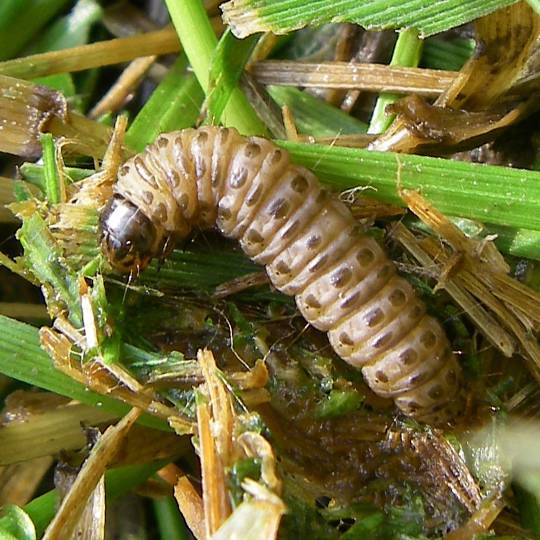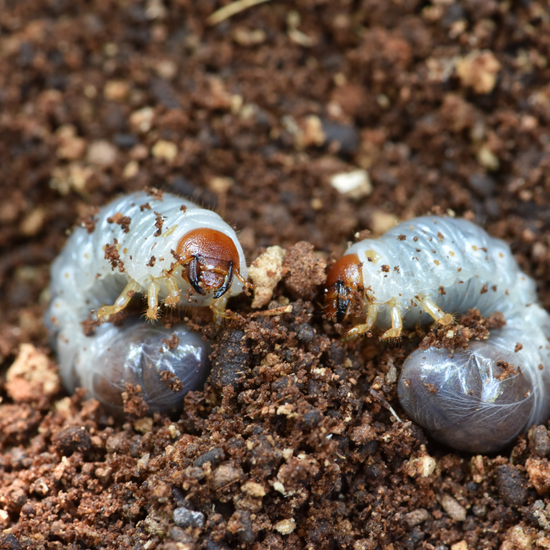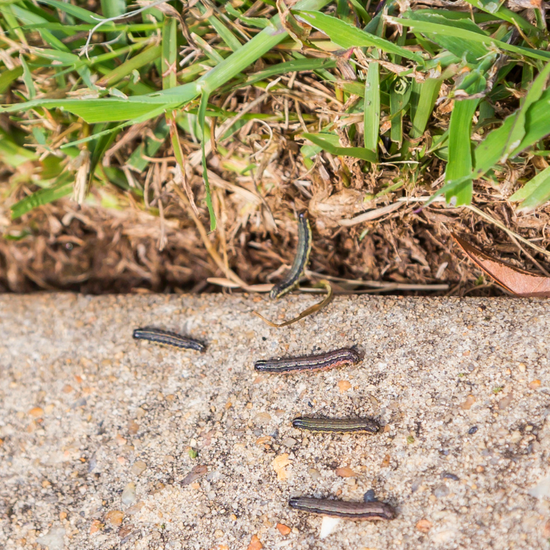Lawn Tips
-

Sod Webworms
In the past few years, we had a massive city-wide outbreak of sod webworms, even eating their way into the media! With our winters being mild, chances are high we will continue to have problems every year. In early June, webworms pupate into cocoons. In approximately 10-14 days, adult moths emerge in the lawn, mate, and lay eggs. Young larvae feed until mid-to-late summer. When you see lawn moths, you can be fairly sure you have sod webworms as the cause. Our treatment is crucial to break this vicious life cycle and help prevent total devastation to your lawn.
-

Grub Worms
The adult female will lay their eggs in May and June. Upon hatching, the grubs in the lawn start feeding. Damage from the grubs can be silently devastating your lawn’s root system even before outward symptoms appear. Once grubs have caused damage, we can spot treat but you, the homeowner, will bear the largest brunt of the treatment (watering the treated areas EVERY DAY for 2 weeks!) Grub damage will continue and in most cases, the grass will have to be replaced because the root system will have been destroyed.
-

Army Worms
Army worms are surface feeders and are easily controlled if identified early enough. They feed on the grass blades and can devastate the lawn’s appearance. With preventative treatment, the damage can be kept at a minimum. Army worms have a similar life cycle to sod webworms and will cause the same type of damage to the turf. This insect feeds 24 hours per day and in large numbers will appear to be “marching across the lawn” like an army.





